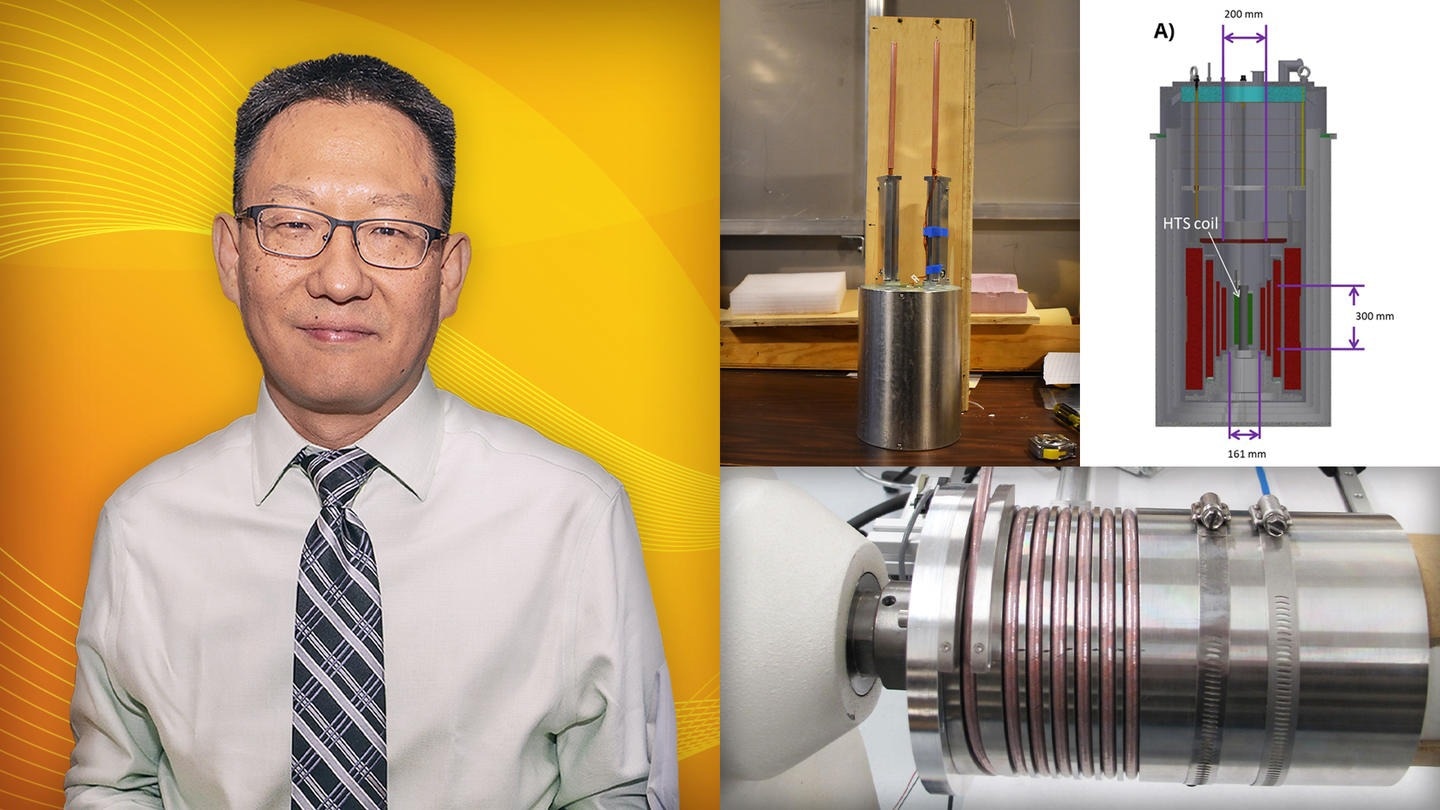At the US Department of Energy’s (DOE) Princeton Plasma Physics Laboratory (PPPL), a new approach has been discovered by researchers that enables them to construct smaller, stronger magnets. This helps in the design and construction of machines.
 PPPL principal engineer Yuhu Zhai with images of a high-temperature superconducting magnet, which could improve the performance of spherical tokamak fusion devices. Image Credit: Kiran Sudarsanan.
PPPL principal engineer Yuhu Zhai with images of a high-temperature superconducting magnet, which could improve the performance of spherical tokamak fusion devices. Image Credit: Kiran Sudarsanan.
This could also help the world exploit the power of the sun to make electricity without producing greenhouse gases that ultimately contribute to climate change.
The researchers discovered a method to construct high-temperature superconducting magnets that are made of a material that has the potential to conduct electricity with little or no resistance at warmer temperatures.
These strong magnets would be able to fit easier within the tight space inside spherical tokamaks. This is shaped more like a cored apple compared to the doughnut-like shape of traditional tokamaks and is being explored as a possible design for future fusion power plants.
As the magnets are able to be positioned away from other machinery in the spherical tokamak’s central cavity to corral the hot plasma that fuels fusion reactions, researchers could repair them without having to take anything else apart.
To do this, you need a magnet with a stronger magnetic field and a smaller size than current magnets. The only way you do that is with superconducting wires, and that’s what we’ve done.
Yuhu Zhai, Study Lead Author and Principal Engineer, Princeton Plasma Physics Laboratory
The study was published in the journal IEEE Transactions on Applied Superconductivity.
Fusion, the power that drives the sun and stars, integrates light elements in the form of plasma — the hot, charged state of matter made of atomic nuclei and free electrons — that produces enormous amounts of energy. Scientists are looking for ways to replicate fusion on Earth for a virtually unlimited supply of safe and clean power to produce electricity.
High-temperature superconducting magnets consist of numerous benefits over copper magnets. It is possible for them to be turned on for prolonged periods compared to what copper magnets can do since they do not heat up as quick. This makes them ideally suited for use in future fusion power plants that will have to function for months at a time.
Superconducting wires are also powerful, and are able to transmit the same amount of electrical current as a copper wire that is many times wider while simultaneously producing a stronger magnetic field.
Furthermore, the magnets could help researchers continue to contract the size of tokamaks, thereby enhancing performance and decreasing construction charges.
Tokamaks are sensitive to the conditions in their central regions, including the size of the central magnet, or solenoid, the shielding, and the vacuum vessel. A lot depends on the center. So if you can shrink things in the middle, you can shrink the whole machine and reduce cost while, in theory, improving performance.
Jon Menard, Deputy Director for Research, Princeton Plasma Physics Laboratory
Such new magnets benefit from a method that has been refined by Zhai and scientists at the University of Colorado, Boulder, Advanced Conductor Technologies, and the National High Magnetic Field Laboratory, in Tallahassee, Florida.
The novel method means that the wires do not require traditional epoxy and glass fiber insulation to guarantee electricity flow. While streamlining construction, the method also reduces charge.
The costs to wind the coils are much lower because we don’t have to go through the expensive and error-prone epoxy vacuum-impregnation process. Instead, you’re directly winding the conductor into the coil form.
Yuhu Zhai, Study Lead Author and Principal Engineer, Princeton Plasma Physics Laboratory
Moreover, “high-temperature superconducting magnets can help spherical tokamak design because the higher current density and smaller windings provide more space for support structure that helps the device withstand the high magnetic fields, enhancing operating conditions,” stated Thomas Brown, a PPPL engineer who contributed to the research.
Brown added, “Also, the smaller, more powerful magnets give the machine designer more options to design a spherical tokamak with geometry that could enhance overall tokamak performance. We’re not quite there yet but we’re closer, and maybe close enough.”
This study was financially supported by the US Department of Energy (Small Business Innovation Research and Laboratory Directed Research and Development).
Journal Reference:
Zhai, Y., et al. (2022) HTS Cable Conductor for Compact Fusion Tokamak Solenoids. IEEE Transactions on Applied Superconductivity. doi.org/10.1109/TASC.2022.3167343.